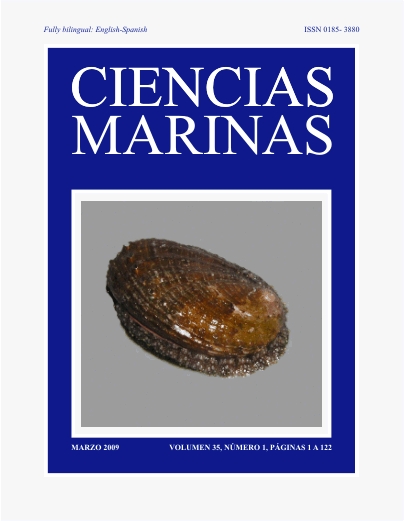Mercury levels in Perna viridis from the north coast of Sucre State, Venezuela
Main Article Content
Abstract
Mercury levels were determined in green mussels, Perna viridis, from two localities of Sucre State (Venezuela): Chacopata and Río Caribe. Specimens were captured in the intertidal zone from February to December 2003. They presented anteroposterior lengths ranging from 18 to 113 mm and were classified, according to their sexual maturity, as juveniles or adults. Mercury was determined by flame atomic absorption spectrophotometry and the method of analysis was validated using certified standards. Seasonal variations were significant at both sites. Highest mercury concentrations in the Chacopata specimens were recorded during February (mean value of 0.432 ± 0.472 µg g–1 d.w.) and in the Río Caribe specimens during April (mean value of 1.129 ± 0.763 µg g–1 d.w.). No relation between mercury levels and sexual maturity was found at Chacopata, but a relation was observed at Río Caribe. Immature organisms showed the highest concentrations (0.471 ± 0.679 and 0.688 ± 0.894 µg g–1 d.w. for males and females, respectively).
Downloads
Article Details
This is an open access article distributed under a Creative Commons Attribution 4.0 License, which allows you to share and adapt the work, as long as you give appropriate credit to the original author(s) and the source, provide a link to the Creative Commons license, and indicate if changes were made. Figures, tables and other elements in the article are included in the article’s CC BY 4.0 license, unless otherwise indicated. The journal title is protected by copyrights and not subject to this license. Full license deed can be viewed here.

